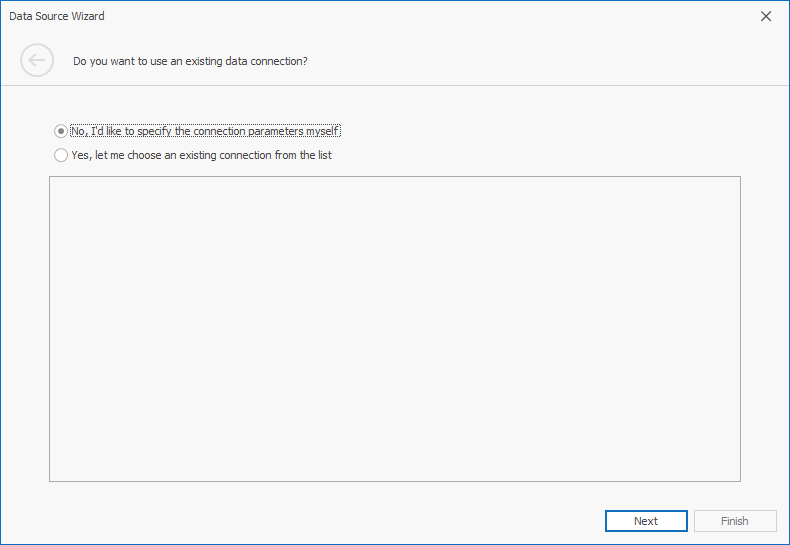Binding to Microsoft Excel Workbooks
- 4 minutes to read
The Dashboard Designer allows you to select required data from Microsoft Excel workbooks (XLS, XLSX or XLSM). You can select all data from the specified worksheet or you can select the cell range referenced by the specified defined/table name.
You can read files from any directory by default. To protect your application, use the AccessSettings class to explicitly specify where data sources can be read from. To accomplish this, configure rules in the DataResources property to restrict file system access to specified folders. You can call the SetRules(IAccessRule[]) method when your application starts to specify rules before a dashboard control sets its rules. The SetRules(IAccessRule[]) method can be called only once at application startup. Otherwise, the method will raise an exception.
Create a Data Source in the Data Source Wizard
To bind a dashboard to a Microsoft Excel workbook, do the following.
Click the New Data Source button in the Data Source ribbon tab.

On the first page of the invoked Data Source Wizard dialog, specify whether you want to use an existing data connection or create a new data connection.

On the next page, select Microsoft Excel workbook / CSV file and click Next.

On the next page, locate the required workbook by clicking an ellipsis button and selecting the file.

Click Next.
Note
If the workbook is protected by a password, the following window will be invoked.

Specify a password in the Password field and click OK. Note that if you enable the Save password flag, the password will be saved to a dashboard definition as plain text.
Then, specify import settings used to extract data from the workbook.

The following options can be specified.
- Use values of the first row as field names - Specifies whether to use the values of the first row as field names. If you disable this option, field names will be generated automatically.
- Skip empty rows - Specifies whether to include the empty rows into the resulting data source.
- Skip hidden rows - Specifies whether to ignore hidden rows when importing data to a data source.
- Skip hidden columns - Specifies whether to ignore hidden columns when importing data to a data source.
Click Next.
On the next page, you can select the worksheet containing the required data, the table or the defined name referring to the specified cell range.

Click Next.
On the final page, you can select columns to be included to a data source and specify their settings. The Name column allows you to specify the column name while Type allows you to specify its type.

Click Finish to create a data source. This creates the data source and displays its fields in the Data Source Browser.
Create a Data Source in Code
The DashboardExcelDataSource class allows you to extract data from Microsoft Excel workbooks (XLS, XLSX or XLSM) or CSV files stored on the disk or stream.
To extract data from the specified workbook or CSV file, do the following.
- Assign the path to the required file using the ExcelDataSource.FileName property. As an alternative, load the required document from a stream using the ExcelDataSource.Stream property. In this case, you need to specify the required file format using the ExcelDataSource.StreamDocumentFormat property.
- Depending on the target file format, create the ExcelSourceOptions or CsvSourceOptions class instance, specify its settings and assign the resulting object to the ExcelDataSource.SourceOptions property.
- Use the ExcelDataSource.Fill method to fill the created data source with data.
Finally, add the created DashboardExcelDataSource object to the Dashboard.DataSources collection.
The following code snippet shows how to create an Excel data source that gets data from the A1:L100 range of cells located on the Data worksheet in the SalesPerson.xlsx workbook.
using DevExpress.DashboardCommon;
//...
DashboardExcelDataSource excelDataSource = new DashboardExcelDataSource()
{
FileName = "SalesPerson.xlsx",
SourceOptions = new DevExpress.DataAccess.Excel.ExcelSourceOptions(
new DevExpress.DataAccess.Excel.ExcelWorksheetSettings()
{
WorksheetName = "Data",
CellRange = "A1:L100"
}
)
};
excelDataSource.Fill();